Review by Brandes Elitch
Photos from the book
After voraciously consuming this book by Necah Stewart Furman, Brandes Elitch gives us a look at the life of this great American designer while commenting on the book.- Ed.
Raymond Dietrich was born in 1894 and passed in 1980, at age 86. What a time to be alive, and what a life he had in a world he helped to create: automotive design.
When he started working for the coachbuilder, Brewster & Co., he was nineteen years old. He had already been taking classes at the Johnson School at the Mechanics Institute in New York City, the only school in the US that taught drafting courses specifically for coachbuilders. He worked a 60-hour week at Brewster, and then spent another 12 hours at night at the Mechanics Institute every week. The school was named the Technical School for Carriage Draftsmen and was founded in 1870 by an ex-Brewster draftsman.
But this is more than a book; it is an heirloom. I have hundreds of car books and I do not have anything quite similar to this. It is quite extraordinary. – B.E.
In 1917, he left Brewster to work for Chevrolet, producing technical drawings and assembly manuals for assembly line workers. He learned how to do that when he was twelve years old, when his father apprenticed him to a printer-engraver. He discovered he had a talent for “vignette engraving.” An engraver works upside down and backwards. It taught him how to visualize a finished product and the discipline of turning out work on a deadline – at age twelve! With the skills he learned then, he could help Chevrolet with detailed drawings that they needed.
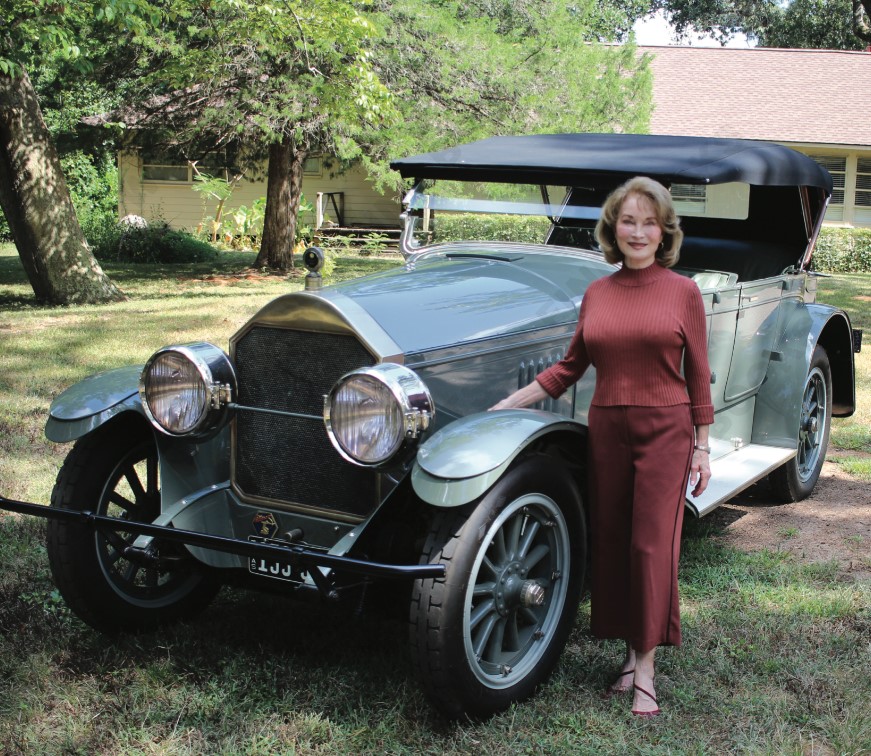
The author, Necah S. Furman, stands next to the 1925 Pierce-Arrow Dual Valve Six ordered by Frank Goodyear, designed by Dietrich.
A year later, he was asked to return to Brewster, where he met Tom Hibbard, and they decided that they would start their own company to become “automotive architects and contractors.” They created a new business model. This started with a customer’s request for a custom body. The customer might be a wealthy individual or a manufacturer, such as Locomobile. Dietrich sketched design renderings and full-size body drafts. When the customer signed off, they would choose a coachbuilder to build the prototype body. The goal was to convince the manufacturer of the chassis to commission a limited run of that body style.
They started a design firm from scratch, with no clients and no money. There was competition too: Brunn, Fleetwood, Murphy, Judkins, Willoughby, and Rollston, among others. The volume manufacturers of course built their own bodies and also used contract body builders, such as Fisher, Briggs, Murray, and Budd.
What made this book work for author Necah Stewart Furman was that Dietrich had saved almost everything and my hunch is that he was likely thinking about doing a book himself. But he had all the background material, a massive treasure chest of drawings, photos, and history for her to use and, being an academic, as well as a friend, she used rigorous standards to write the book.- B.E.
The two men chose the name Le Baron Carrossiers, and in 1920 leased an office space in Manhattan. They got their first order from the NY Packard distributor, for a 7-passenger limousine, and they were off to the races. An early success was building a phaeton for Lincoln in 3 weeks, for the 1921 NY Auto Show. It was successful and it led to a meeting with Edsel Ford, at which point they got a contract to design production bodies for Lincoln. At the 1922 Salon, they exhibited cars on Isotta Fraschini, Minerva, Peerless, and Lafayette chassis. Dietrich also designed cars for Locomobile and Crane-Simplex, Mercedes, Rolls Royce, Minerva, Delage, FIAT, Hispano, Isotta, and Renault in 1923!
This book is really not so much about Dietrich as about the era when he lived, and where he thrived. This is the era recognized by the Classic Car Club of America. It was over by 1942 and it did not come back.-B.E.
As things turned out, his partner Hibbard joined up with Dutch Darrin and those two decided to open an office in Paris to sell luxury motorcars which they would have built in Belgium. Since Hibbard had been their illustrator, Dietrich had to hire someone else. They were busy, and by the 1923 Salon, they had a total of 12 entries at the show. In 1924, Dietrich’s work appeared in the Packard custom body catalog. By 1924, Edsel Ford was ordering 5-10 examples of a design and if it sold well, Ford would have Murray mass produce the bodies. In 1925, Ford offered to hire Dietrich which was seen as a kindness by Edsel Ford.
By 1927 Dietrich’s operation was profitable and he was moved to a larger building. At the 1925 Salon, Dietrich had Packard, Lincoln, and Marmon on show. In 1927 Dietrich assumed all of Franklin’s design work and moved into a former Lincoln plant, and again through the kindness of Edsel Ford, Dietrich was able to buy the building. At that point the Dietrich semi-custom production body business became the largest in the country, turning out over 1000 bodies a year! In 1927, a Lincoln convertible won Dietrich the Best of Show at the Paris Salon! At the 1929 salon, Dietrich had 8 bodies on display. However, by September 1930, it was over due to the Depression, However, Dietrich exhibited as a free-lance designer at the 1930-31 Chicago and NY Salons.
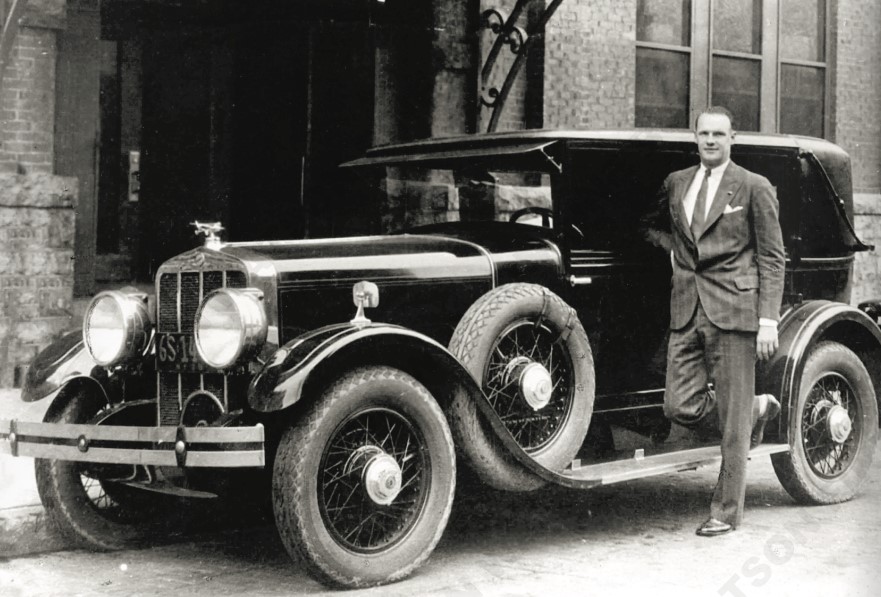
Dietrich stands next to the 1928 Franklin, the body created by his own company, Dietrich Inc. He would continue to work with Franklin until 1931.
In 1931, he met Walter Chrysler and was offered a job. At Chrysler, he set up a four-year course in body design and engineering at the Chrysler Institute of Engineering. These were night courses which taught the students the basics of art, drafting, geometry, and problem solving in general. At that time Chrysler was run by the Three Musketeers, Zeder, Breer, and Skelton, and did not have an in-house styling department. He left Chrysler in 1938, after WPC took ill. WPC was his mentor.
After that, he was hired by Checker Cab to redesign the plant’s assembly lines. When their war contract started, he helped Checker design a tank retriever. In 1949 he opened up an office in Grand Rapids, MI. Limousines and show cars were built there, including a Lincoln limousine for President Truman.
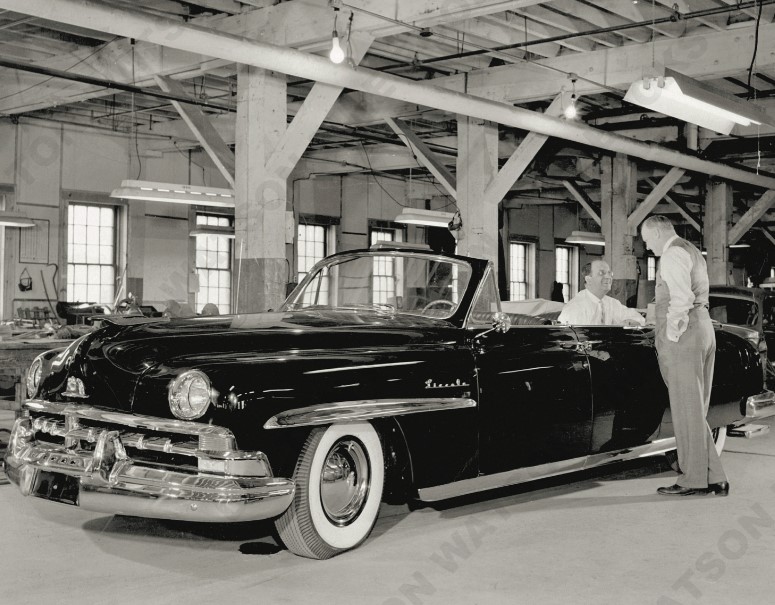
In a new factory in Grand Rapids, Dietrich produced the Presidential Lincoln for the Truman Administration.
He retired from automotive consulting in 1960, but in a surprise event, he was hired by Gibson Guitar to design a guitar. He designed an iconoclastic guitar called the Firebird, which is highly collectible today.
When you page through the book, your overwhelming reaction is: “I wish I was alive then.”- B.E.
From Dalton Watson:
Written by Pulitzer Prize nominee Necah Stewart Furman, Ph.D., this comprehensive, entertaining, and long-awaited biography of famous classic car designer Raymond H. Dietrich is an accurate record of his life and times based upon records and interviews unavailable to others.
Over 600 photographs and documents, many never previously published.
Traces the eight decades of the designer’s life and times revealing little known aspects of his career; his triumphs over tragedy.
Contains almost eighty archival photographs with annotations by automotive author, Richard Burns Carson.
Includes a “Back to the Future” section of beautifully restored Classics renovated by present-day owners with loving care and technical expertise, photographed by acclaimed photographer Hugues Vanhoolandt.
Automotive historians, car collectors, and those simply looking for a good read will appreciate how this handsome biography of Raymond H. Dietrich evokes a sense of time and place, and also manages to correct published misinformation in the process.
Price: $225.00
You’ll earn 20 points
Shipping Costs: FREE SHIPPING TO USA AND UK. Shipping to all other countries will be charged one flat rate for first item, additional books in the same order are shipped for no additional s/h charge.
ISBN: 978-1-956309-09-6
Page Size: 290mm x 254mm
Page count: 632
Image count: 615
Hard cover with dust jacket
First published 2023
Necah Stewart Furman earned her doctorate at the University of New Mexico and other degrees from the University of Texas system. She is author or co-author of seven books, two of which were nominated for the Pulitzer Prize including one that received the Society for Technical Communications Award for Excellence. She has also published numerous articles, reviews, and monographs on subjects ranging from celebrities to nuclear reactors. Of all these, however, Furman claims that the most memorable was her selection by famous classic car designer Ray Dietrich and wife Marion to write his biography. She had already published an article on Dietrich in The Classic Car magazine and subsequently would publish additional articles on various aspects of his design philosophy and career in The Dearborn Historian and Classic Cars Seen. Furman recalls her interaction and resulting friendship with Dietrich as being “a rare privilege and opportunity to preserve the legacy of one referred to as ‘the automotive architect of the Classic Era.’”
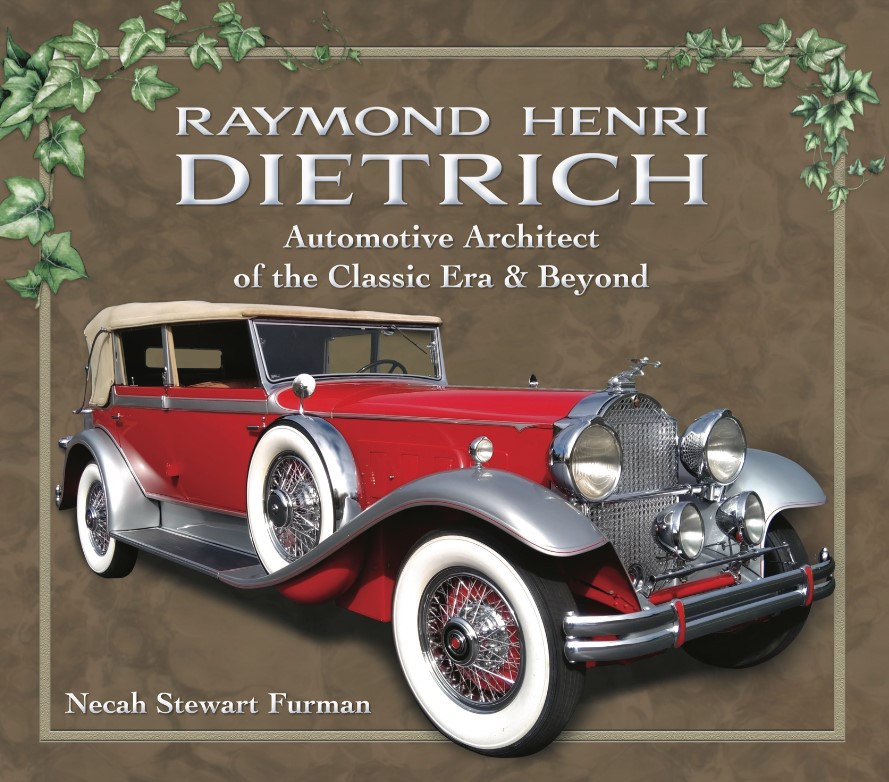
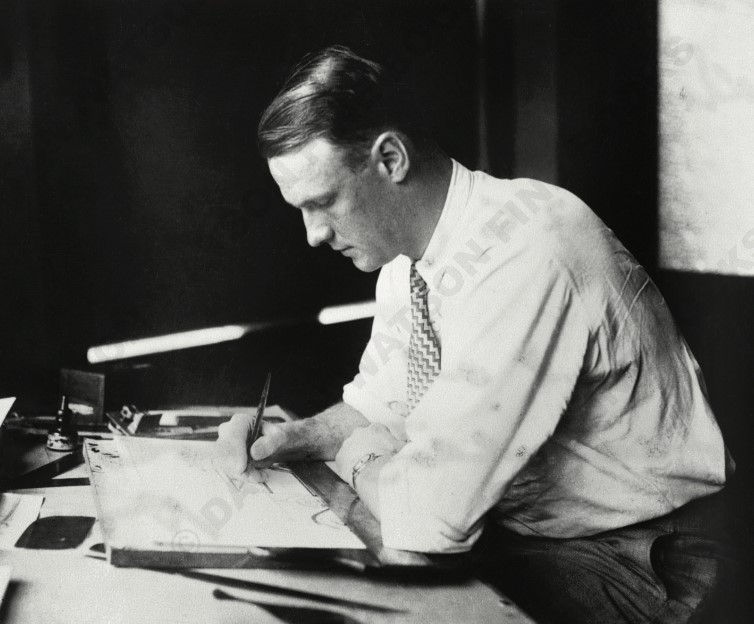
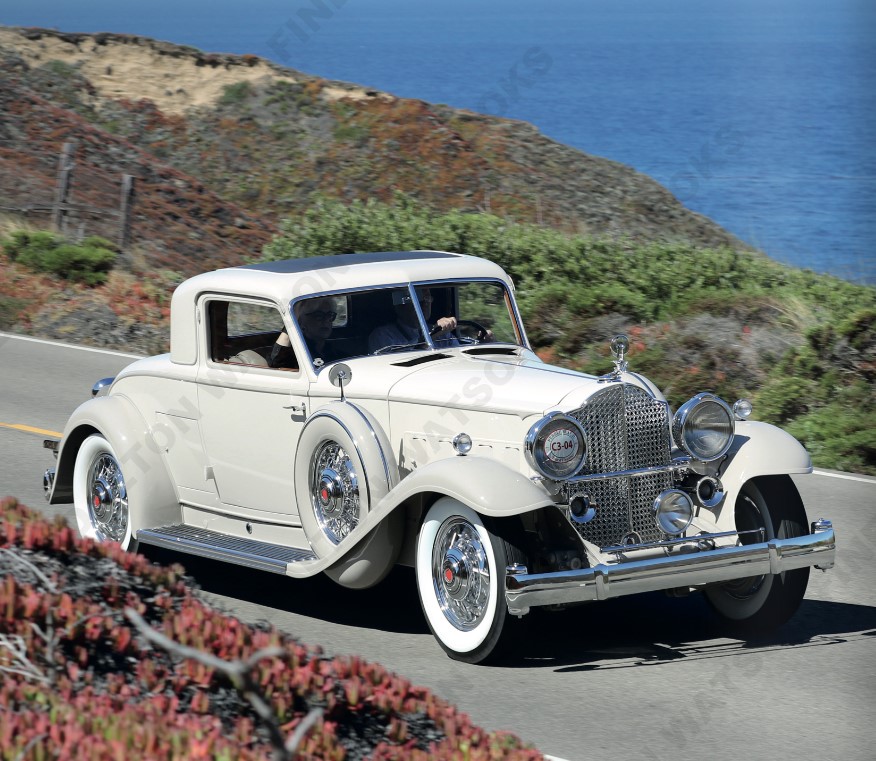
When I was a little kid, I was gifted a Packard dinky toy. A late 1930s model, it was one of my favorites, and may well have been based on one of the Dietrich designs. Little did I know about the subject in those early years. To my dismay, my little brother decided to throw it from out fifth floor apartment building, which did its shape no good. But it survived, with its roof line a little crooked. Even as a toy, those Packards were strong!